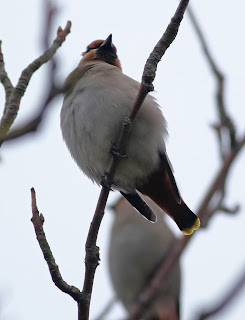The first instalment of "highlights" from a tour around the Cairns area last August. My nephew's wedding in Noosa, north of Brisbane, presented the ideal opportunity to spend some time exploring north Queensland, and area I'd not visited on two previous visits to Australia.
With a week available, the itinerary was honed-down to three areas: Yungaburra and Mount Molloy in the Atherton Tablelands (inland from Cairns), and the Daintree area north of Cairns. I also had three specific targets - Platypus, Southern Cassowary and Victoria's Riflebird (a bird-of-paradise).
Rather than write in detail about where to go and stay, I hope the images will give a flavour of what you can see in a week or so in this excellent area. Top of my list of "wildlife to see" was definitely the Platypus. I was blown away by the wonderful views I had to two individuals right up close at
Peterson Creek, a well known Platypus-spotting reserve of the outskirts of Yungaburra. Their presence was first given away by a trail of bubbles breaking the surface..... then that amazing face appeared! They couldn't have been more confiding.
 |
| Platypus in the creek |
 |
| Getting closer |
 |
| now almost too close for my 400mm lens |
This all happened just hours after Mark and I had touched down at Cairns Airport, picked up a hire car and driven up the long, winding road to the Atherton Tablelands. After checking into a motel and grabbing some lunch, I thought I might as well check out the reserve as it was just a few hundred metres along the road, and was very pleasantly surprised to find the Platypus almost immediately (they are more active at dawn and dusk).
The Atherton Tablelands sit at about 1000m elevation, and much of what was once extensive rainforest has made way for farmed countryside with cattle and crops, but the rolling landscape still dotted with patches of surviving rainforest and surrounded by relatively unspoilt forest-clad mountains. There is a rich variety of wildlife here, including several endemic birds and marsupials, and some impressive trees, volcanic cater lakes and wetlands.
 |
| Saw-shelled Turtle, Peterson Creek |
 |
| Spectacled Monarch - commonly encountered in the rainforest |






















































